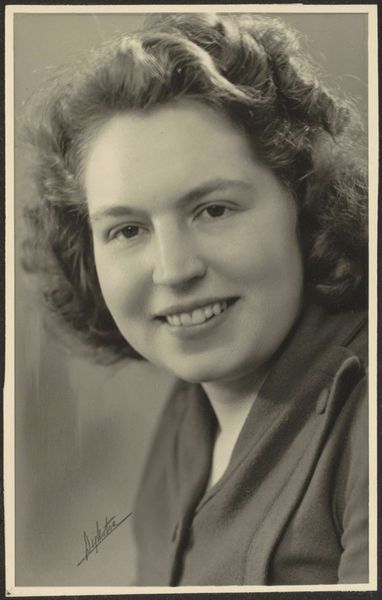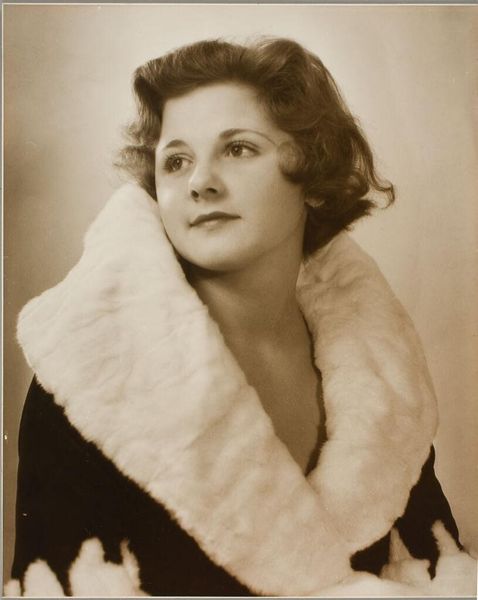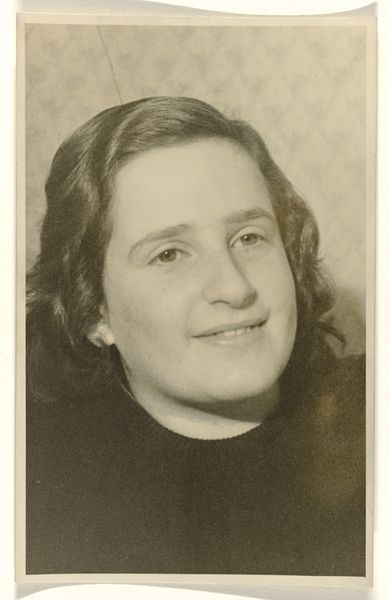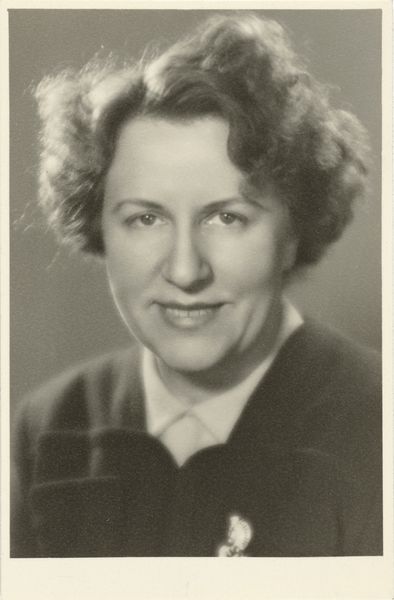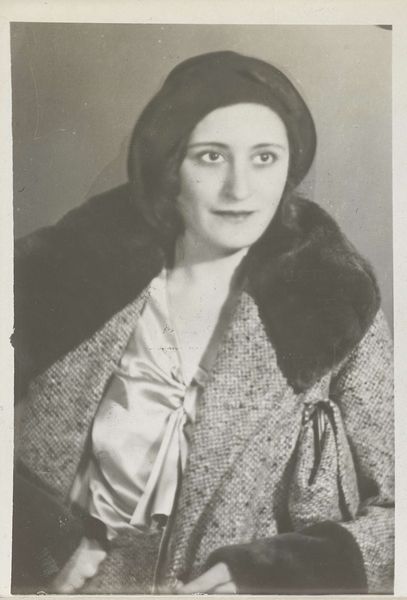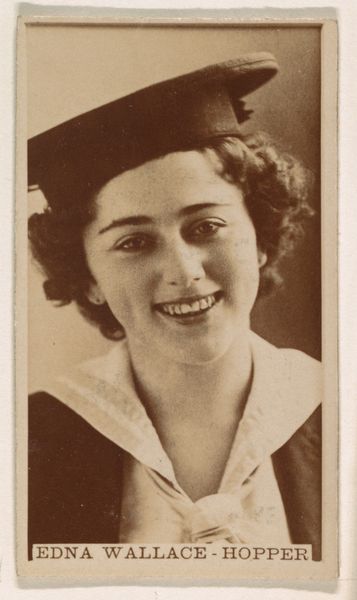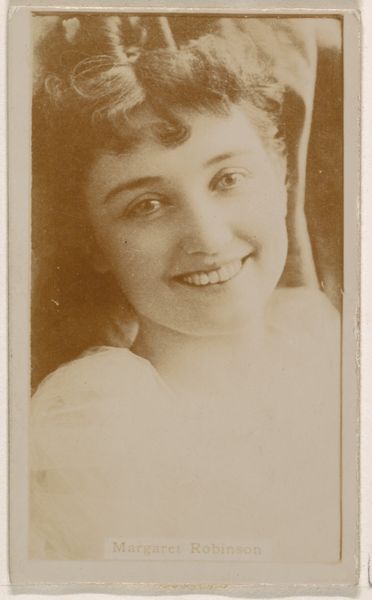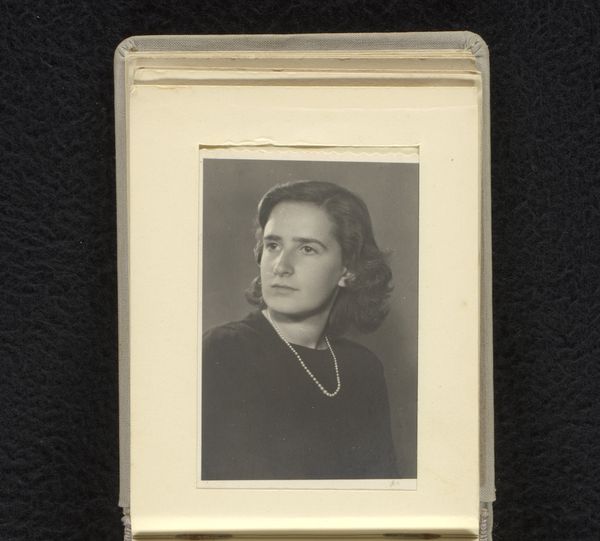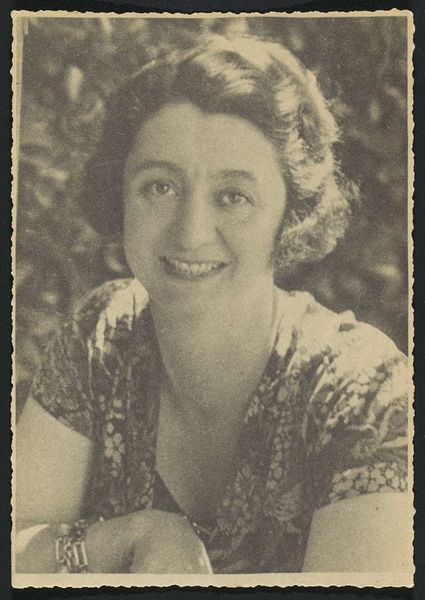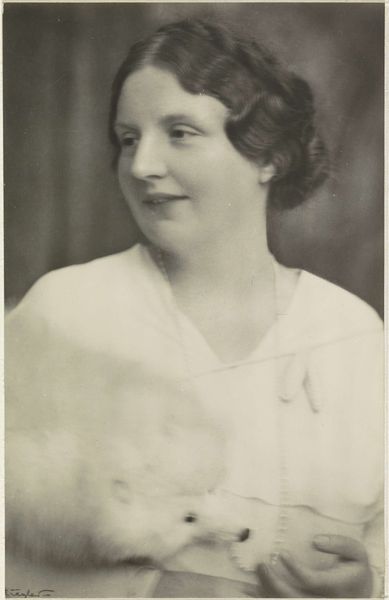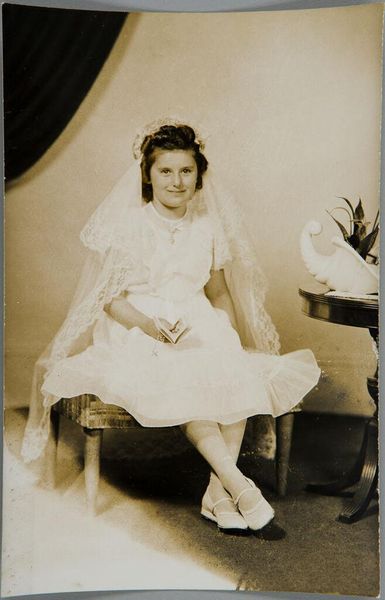
Portret van een deelnemer aan een cursus van de Koloniale School voor Meisjes en Vrouwen te 's-Gravenhage c. 1930s - 1940s
0:00
0:00
photography, gelatin-silver-print
#
portrait
#
portrait
#
photography
#
gelatin-silver-print
Dimensions: height 140 mm, width 88 mm
Copyright: Rijks Museum: Open Domain
Editor: This gelatin-silver print, titled "Portret van een deelnemer aan een cursus van de Koloniale School voor Meisjes en Vrouwen te 's-Gravenhage," roughly translates to "Portrait of a participant in a course at the Colonial School for Girls and Women in The Hague." It was created anonymously sometime in the 1930s or 40s. What strikes me is how this photo seems to simultaneously convey both elegance and a certain austerity. What's your read? Curator: The material reality of the gelatin-silver print itself is fascinating. The photographic process, becoming increasingly accessible during this period, democratized portraiture, even as it retained certain social functions. It's not just *who* is represented, but *how* – and how that reflects colonial power structures. How do you think the standardization of such images in this context might relate to ideas of control or even the production of certain narratives of colonial life? Editor: That's interesting. I hadn't thought about it that way. It makes me wonder about the photographer, their motivations, and if they had to follow a strict brief about how they posed the subjects in order to control their representation. Do you think the fact that it’s anonymous impacts our understanding of that relationship to the photographic process? Curator: Absolutely. The anonymity further shifts our focus onto the subject as a manufactured representation, not necessarily as an individual. Consider the labour involved: the colonial school producing this imagery, the technicians creating and developing the print, and, of course, the sitter. This work offers up questions about the processes behind creating, circulating and then ultimately, consuming the image itself. It serves as a testament to photography's material function in constructing and perpetuating cultural narratives during the colonial era. Editor: It's amazing how analyzing the materials and context opens up new layers of understanding. Thanks! Curator: Precisely! Now we might start considering the socio-economic positionality of photography's distribution within the colony. Another piece for another time!
Comments
No comments
Be the first to comment and join the conversation on the ultimate creative platform.
